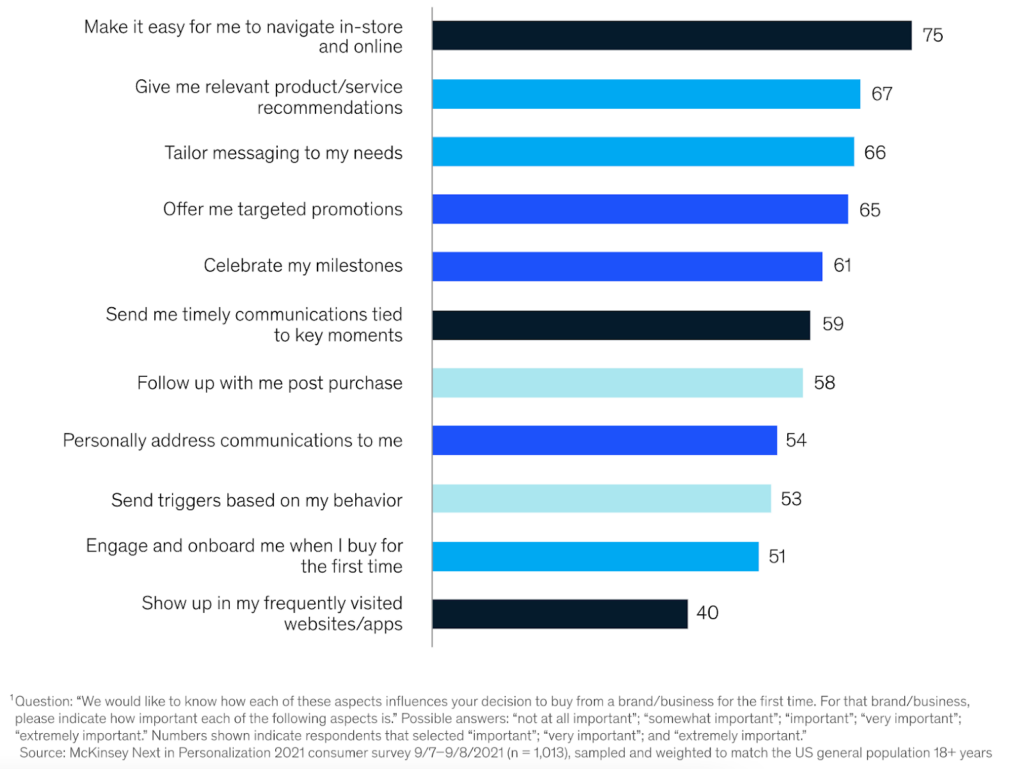Customer demands are strong, and they’re redefining the digital landscape at a rapid pace. Customers want brands to provide highly relevant digital experiences that are tailored to their interests and help them accomplish their goals.

At the same time, customers are increasingly concerned about privacy, and they want to know how brands are using their personal data. With third-party cookies on their way out, attention is shifting to how brands are using and protecting customers’ first-party data.
Privacy is the Building Block for Customer Trust
Going forward, brands that incorporate privacy into their digital experience optimization strategy will be able to maintain the competitive advantage. Specifically, customers are more trusting when brands are transparent about how they use customer data. According to Transcend’s annual Data Privacy Feedback Loop, brands that prioritize consumer privacy are viewed as “trustworthy” (62%) and “seen to care about their customers” (60%). On the other hand, brands that offer lackluster privacy protection were called “untrustworthy” (59%), and “unethical” (44%).
Brands can get even further ahead by prioritizing efforts to give customers greater control over their first-party data. This has become increasingly important as Transcend’s report reveals that 88% of American consumers expressed frustration at the lack of control over their personal data.
Maintaining customer trust is vital for strengthening the customer relationship and building customer loyalty. Customer loyalty, in turn, drives lifetime value with repeat purchases. In addition, customer loyalty fuels word-of-mouth recommendations, ultimately increasing brand awareness and new customer acquisition.
The Real Business Impact of the Privacy Experience
Like most things related to digital experience optimization, execution does matter! Brands need to understand the importance of getting the privacy experience right. It’s not simply about having a checklist to meet privacy regulations, for example, throwing in complicated privacy language and burying it on the website. It’s about creating a privacy experience where a customer can easily access, understand, and control how their first-party data is being used.
Delivering the right privacy experience as part of a brand’s digital experience optimization strategy is expected to drive real business impact. For example, it’s predicted that brands which prioritize the privacy experience can lead to “up to 20% more digital revenue than those that don’t.” Overall, brands that invest in privacy are seeing results, as Cisco’s Data Privacy Benchmark Study highlights, on average, every dollar spent on privacy sees a $2.70 return in benefits.
It Pays to Consider All Aspects of the Digital Experience
It can be challenging to meet the needs of increasing customer expectations, both from a personalization and privacy perspective. The first step to success is ensuring key stakeholders understand how both aspects are integral to a digital experience optimization strategy. Ultimately, the brands that can understand and execute on this will reap the benefits, with increased loyalty, customer satisfaction, and ROI.
BlastX is a leader in balancing privacy with digital experience optimization, including the use of first- and zero-party data. Talk to one of our experts.

